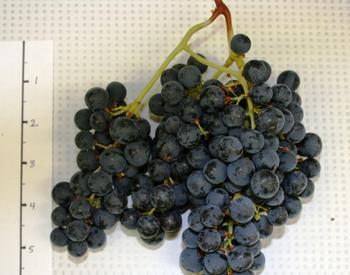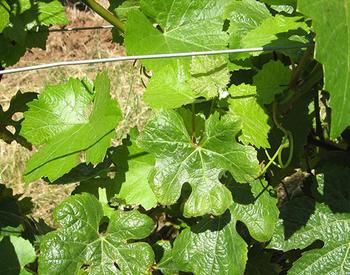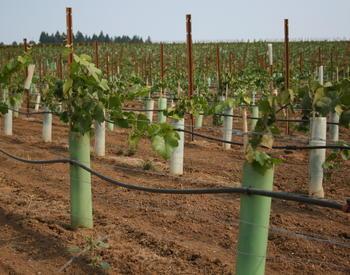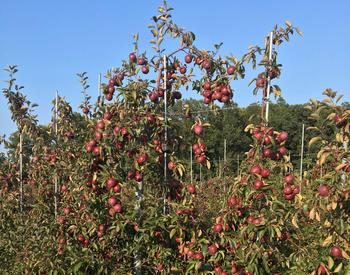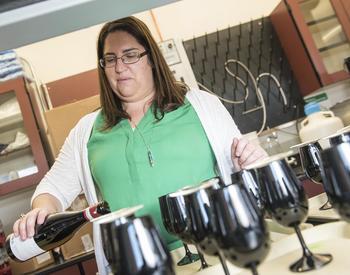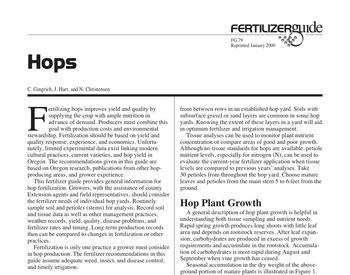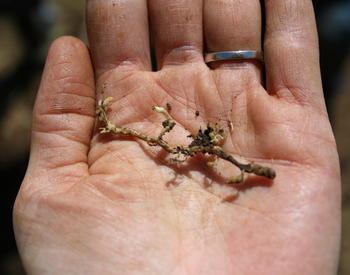What is malolactic fermentation?
Malolactic fermentation (MLF) is a vital step in the production of red wines as well as some white wines. MLF is performed by lactic acid bacteria, primarily Oenococcus oeni and results in the conversion of malic acid to lactic acid causing a decrease in acidity.
For wines grown in cool climates that contain high levels of malic acid, this decrease in acidity is essential to wine balance. In addition, MLF can modify certain wine flavors and aromas such as diacetyl. This compound has a buttery aroma, and while at high concentrations (> 5 mg/L) it can be objectionable, at lower concentrations it may be desirable (depending on the wine style).
Traditionally, this process has been conducted by indigenous wine lactic acid bacteria (LAB) present on the grapes or within the winery, and occurs during or after the alcoholic fermentation (AF). However, with the development of commercial starter cultures of O. oeni, winemakers now have more control over the timing of when this process occurs. This naturally leads to the question, “When is the best time to conduct the MLF?”
When should malolactic fermentation take place?
MLF is most commonly conducted after the completion of the AF (sequential inoculation). There are a number of reasons for this.
First, it may be logistically advantageous to separate the two processes of AF and MLF so that wines in which you wish to retain acidity can be more easily prevented from undergoing MLF.
Second, there is concern that the addition of O. oeni into juice or must (rather than wine) can lead to an increase in volatile acidity (VA) since O. oeni can convert sugar into acetic acid. However, several studies report that MLF in the presence of sugars does not necessarily lead to an increase in VA if the AF starts well and has no issues completing.
Others have also shown that O. oeni metabolism is significantly impacted by pH, and that at pH < 3.50 the bacteria will begin to consume sugar only when malic acid has been degraded. This means that in wines where the pH is < 3.50 acetic acid production by O. oeni would likely only be an issue if AF was sluggish and resulted in residual sugar still being present when the bacteria had completed malic acid degradation.
At higher pH (> 3.50), the risk of acetic acid production by O. oeni is greater as sugar metabolism may occur concurrently with malic acid consumption. Recent work in our laboratory confirms what others have found regarding acetic acid production during simultaneous MLFs.
Chardonnay wines were produced where MLF was conducted simultaneously or sequentially. Fermentations (AF and MLF) were performed at either 15°C or 21°C with the pH values of the wines being relatively low (pH < 3.50). At each temperature, there were no significant differences in the acetic acid concentrations of wines produced with simultaneous or sequentially MLF (Table 1). Instead, acetic acid concentration was more dependent on fermentation temperature, with wines fermented at 15°C containing significantly higher acetic acid concentrations than wines fermented at 21°C no matter how MLF was conducted (Table 1).
| Fermentation temperature (°C) | Days to complete alcoholic and malolactic fermentation | Alcohol % (v/v) | Acetic acid (g/L) | Wine pH | |
|---|---|---|---|---|---|
| Co-inoculation | 15°C | 26a | 14.14a | 0.72a | 3.37 |
| Sequential | 15°C | 68b | 14.64b | 0.70a | 3.44 |
| Co-inoculation | 21°C | 26a | 14.18a | 0.58a | 3.42 |
| Sequential | 21°C | 62b | 14.55c | 0.56b | 3.44 |
An additional concern when conducting simultaneous fermentations is the potential inhibition of yeast by the bacteria leading to stuck or sluggish AF. While there are reports of this occurring, the issue was yeast strain specific, and highlighted the importance of choosing the right combination of yeast and ML bacteria strains if a simultaneous MLF is being conducted.
Regardless of when you decide to conduct the MLF, using a compatible yeast and ML bacteria strain is important as certain yeast strains can be inhibitory to ML bacteria and cause problematic MLF.
Many wine yeast and ML bacteria producers provide recommendations for combinations of yeast and ML bacteria strains to use, and these may differ depending on whether you wish to perform a simultaneous or sequential MLF.
Considerations for using malolactic fermentations
Effects on red color
Loss of red wine color due to simultaneous MLF may also be a concern that may discourage a winemaker from using this technique. However, recent studies in our lab demonstrated that color loss due to MLF occurs whether MLF is simultaneous or sequential.
Color loss is primarily due to the lower concentration of polymeric pigments in wines that have undergone MLF compared to those that have not (Figure 1), and wines that underwent simultaneous MLF show the same trend. Degradation of acetaldehyde by O. oeni is thought to be responsible for the decreased levels of polymeric pigments as this compound is involved in the formation of these stable color pigments. Because O. oeni degrade acetaldehyde during simultaneous and sequential MLF it does not matter when MLF is conducted.
Reducing microbial spoilage
While many of the reasons given for why MLF should be conducted sequentially rather than simultaneously are not necessarily backed up by research, are there any compelling reasons why you may want to conduct your MLF simultaneously?
The major advantage with a simultaneous MLF is the reduced time needed to complete both the AF and MLF. This is important from an efficiency point of view, allowing wines to be stabilized with SO2 sooner and minimizing the risk of microbial spoilage issues such as Brettanomyces.
For example, in our chardonnay study, simultaneous fermentations were completed in 26 days at both 15°C and 21°C while sequential fermentations took 68 days to complete at 15°C and 62 days at 21°C (Table 1). This meant that wines produced by simultaneous MLF could have SO2 added up to 40 days earlier than wines produced by sequential ferments.
Notably, the wines produced in this study contained relatively high alcohol content (> 14% v/v) and yet did not have any issues completing MLF if the MLF was simultaneous. A successful MLF is often difficult to complete in high alcohol wines. However, the addition of ML bacteria at the beginning of AF allows the bacteria to acclimate to increasing alcohol concentration as fermentation proceeds rather than being directly added to a high alcohol wine at the end of AF. In a similar manner, simultaneous MLF has also been shown to work well in low pH white wines that can also be problematic for MLF.
Effects on wine flavor and aroma
MLF timing will also affect several wine flavor and aroma qualities. In particular, the concentration of the buttery aroma compound diacetyl will depend on whether MLF is simultaneous or sequential.
Diacetyl can be produced by O. oeni during the MLF with the amount produced being dependent on O. oeni strain, fermentation conditions (pH, oxidative-reductive potential, temperature) and citric acid concentration. Under reductive conditions, diacetyl can be reduced to acetoin and then further to 2,3-butanediol, which can have little to no sensory impact.
The reduction of diacetyl occurs during AF as the fermenting yeast create a very reductive environment. Because of this, diacetyl produced by O. oeni during a simultaneous fermentation will quickly be reduced to acetoin and potentially to 2,3-butanediol resulting in low diacetyl concentrations in the wine.
Therefore, if your goal is to produce a wine with buttery diacetyl aromas, you should not conduct a simultaneous MLF. Rather, perform a sequential MLF with a high diacetyl-producing O. oeni strain. On the other hand, if you wish to avoid having diacetyl in your wine, then consider conducting a simultaneous MLF with a low diacetyl-producing strain.
In choosing when to conduct the MLF in your wines, consider the advantages and disadvantages of conducting a simultaneous MLF. For some wine types and styles, this option may provide a number of benefits.
For others, a sequential MLF may still be the best option, particularly in the case of higher pH wines or wines that you predict may have difficulty completing alcoholic fermentation.
If you choose to conduct a simultaneous MLF, check with your yeast and bacteria suppliers to ensure good compatibility between yeast and O. oeni strains. Also, keep in mind that O. oeni are more sensitive to low temperature and SO2 concentrations, so you may have to adjust your winemaking procedures to ensure the success of the simultaneous MLF.
Literature cited
Beelman RB and Kunkee RE. 1985. Inducing simultaneous malolactic-alcoholic fermentation in red table wines. In Proceedings of the Australian Society for Viticulture Oenol Sem Malolactic Fermentation, pp. 97-112.
Burns TR and Osborne JP. 2013. Impact of malolactic fermentation on the color and color stability of Pinot noir and Merlot wine. Am J Enol Vitic 64:370-377.
Henick-Kling T and Park YH. 1994. Considerations for the use of yeast and bacterial starter cultures: SO2 and timing of inoculation. Am J Enol Vitic 45:464-469.
Jussier D, Dube Morneau A, Mira de Orduna R. 2006. Effect of simultaneous inoculation with yeast and bacteria on fermentation kinetics and key wine parameters of cool-climate Chardonnay. Applied Environmental Microbiology 72:221-227.
Knoll C, Fritsch S, Schnell S, Grossmann M, Krieger-Weber S, du Toit M, Rauhut D. 2012. Impact of different malolactic fermentation inoculation scenarios on Riesling wine aroma. World Journal of Microbiology and Biotechnology 28:1143-1153.
Krieger-Weber S and Silvano A. 2015. Determining when to add the selected wine lactic acid bacteria. In Malolactic Fermentation – Importance of Wine Lactic Acid Bacteria in Winemaking. R Morenzoni (ed.), pp. 159-177. Lallemand, Montreal, Canada.
Munoz V, Beccaria B, Abreo E. 2014. Simultaneous and successive inoculations of yeasts and lactic acid bacteria on the fermentation of an unsulfited Tannat grape must. Brazilian Journal of Microbiology 45:59-66.
Osborne JP and Edwards CG. 2006. Inhibition of malolactic fermentation by Saccharomyces during alcoholic fermentation under low- and high nitrogen conditions: a study in synthetic media. Australian Journal of Grape and Wine Research 12:69-78.
Sereni A. 2016. Exploration into the Influence of Malolactic Fermentation Parameters and Pre-fermentation Juice Treatment on Chardonnay Mouthfeel. MS Thesis, Oregon State University, Corvallis.

